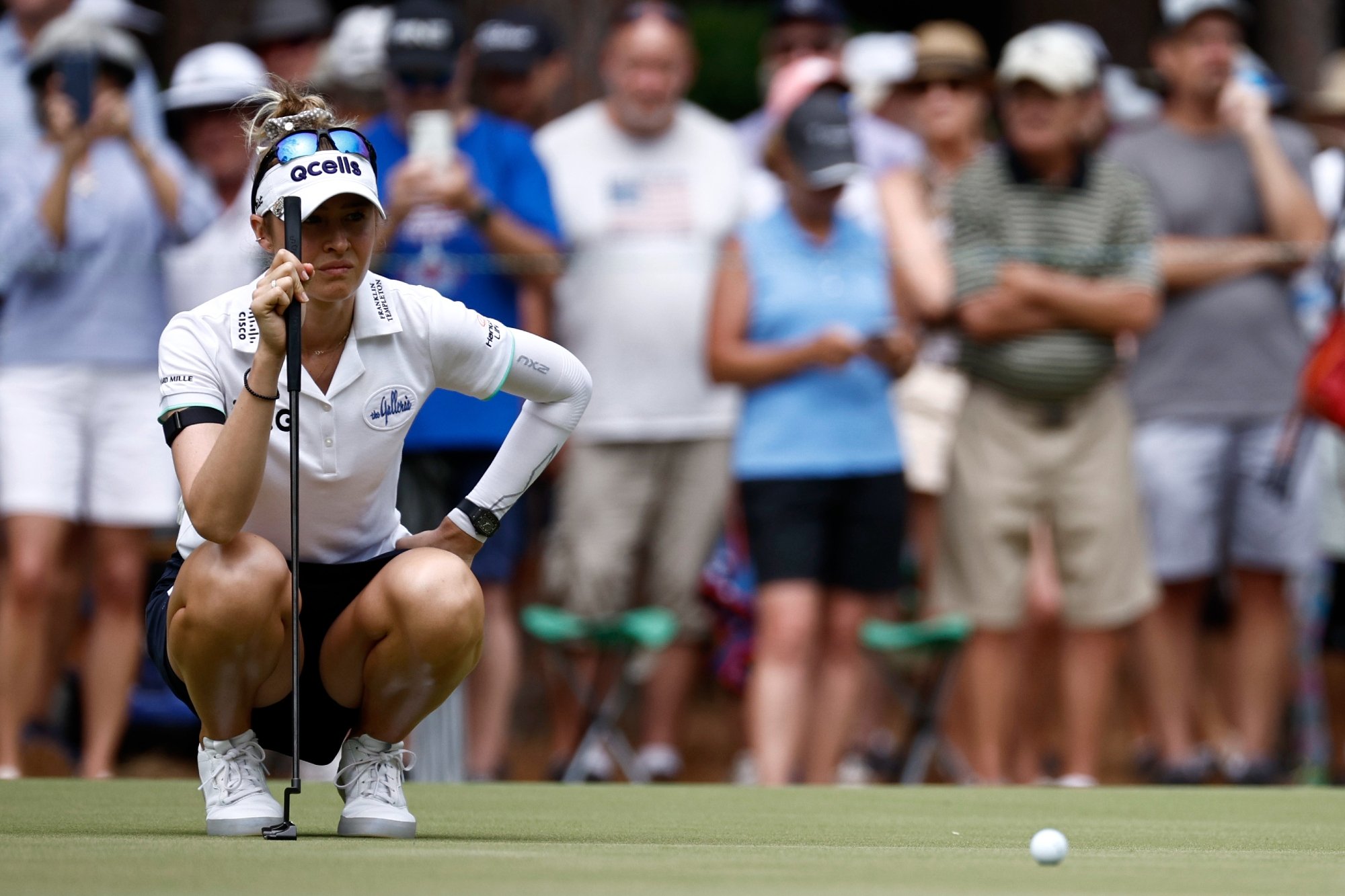I love Happy Gilmore – particularly the scene where he implores his ball to “go home” and takes umbrage when it won’t comply.
But sometimes, as it did for Barry Haworth, the ball can take on a life of its own. He emailed to say: “In a Saturday Medal at my club, Rushcliffe, I had a 10-foot putt for par on the 5th.
“I took my stroke and the ball stopped on the lip of the hole. I waited a few seconds (less than 10), thought it was not going to drop, and went to putt out.
“As my putter approached the ball, it started to drop into the hole (witnessed by my playing partners), but my putter face did touch the ball as it was dropping.
“Par, bogey, or penalty?”
What to do when ball moves during backswing or stroke

It’s a… bogey. While you might all be rushing to Rule 13.3 – Ball Overhanging Hole – which gives a player 10 seconds to wait and see whether the ball will fall into the hole, it’s Rule 9.1b that’s going to apply.
Barry is making a stroke when the ball at rest on the lip starts to move and Rule 9.1b says when a player’s ball at rest starts moving “after the player has begun taking the stroke or the backswing for a stroke and the player goes on to make the stroke” – all of which has happened in this case – then the ball isn’t replaced and it doesn’t matter what caused it to move.
But wait, hasn’t he made a stroke at a moving ball, which is not allowed under Rule 10.1d? No because, in an exception to this rule, if the ball begins to move “only after the player begins [a] backswing for [a] stroke”, it’s Rule 9.1b that takes precedence.
So what’s the upshot? The stroke counts – Barry did actually hit the ball – and the ball is holed.
Advertisement
Got a question for our expert?
Despite the changes to the Rules of Golf in 2019 and 2023, there are still some that leave us scratching our heads. I’ll try to help by featuring the best of your queries in this column.
What do you think about this ball moves during backswing rule? Let me know by leaving a comment on X.
Advertisement
